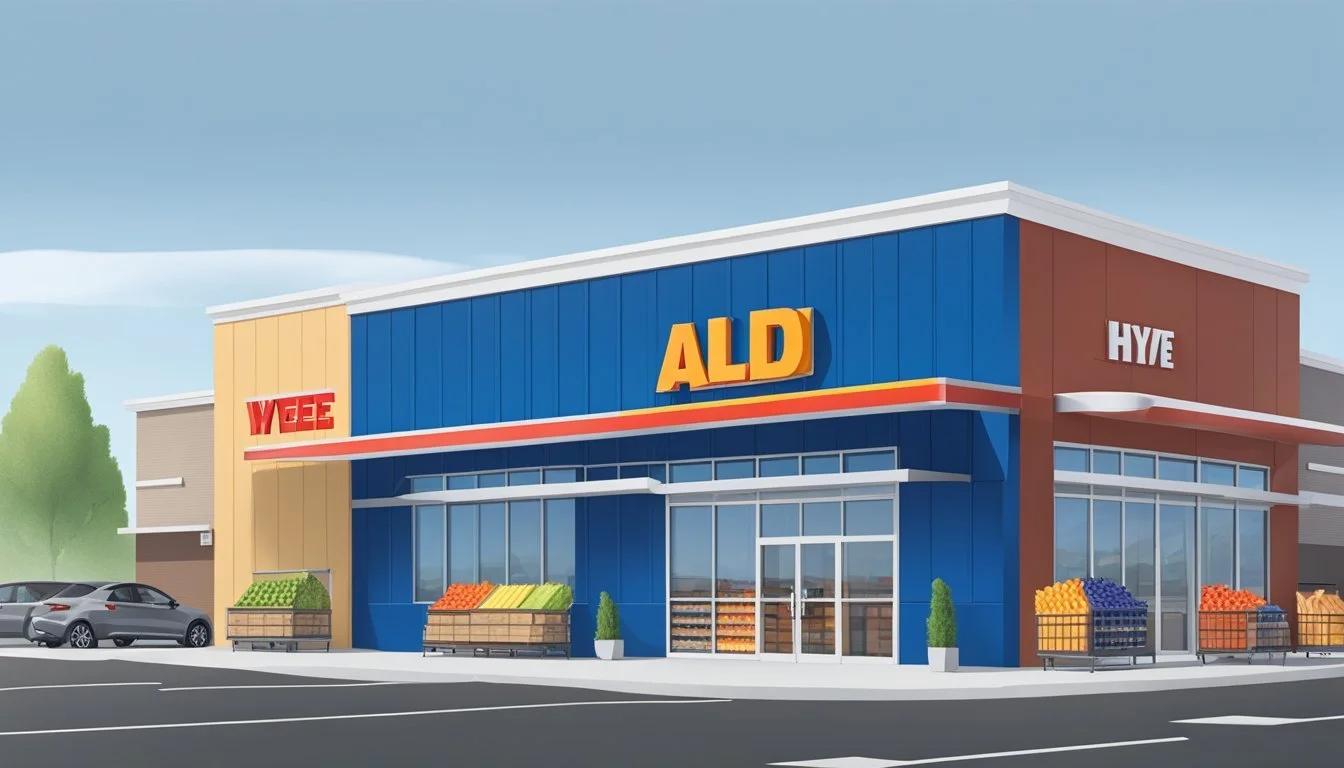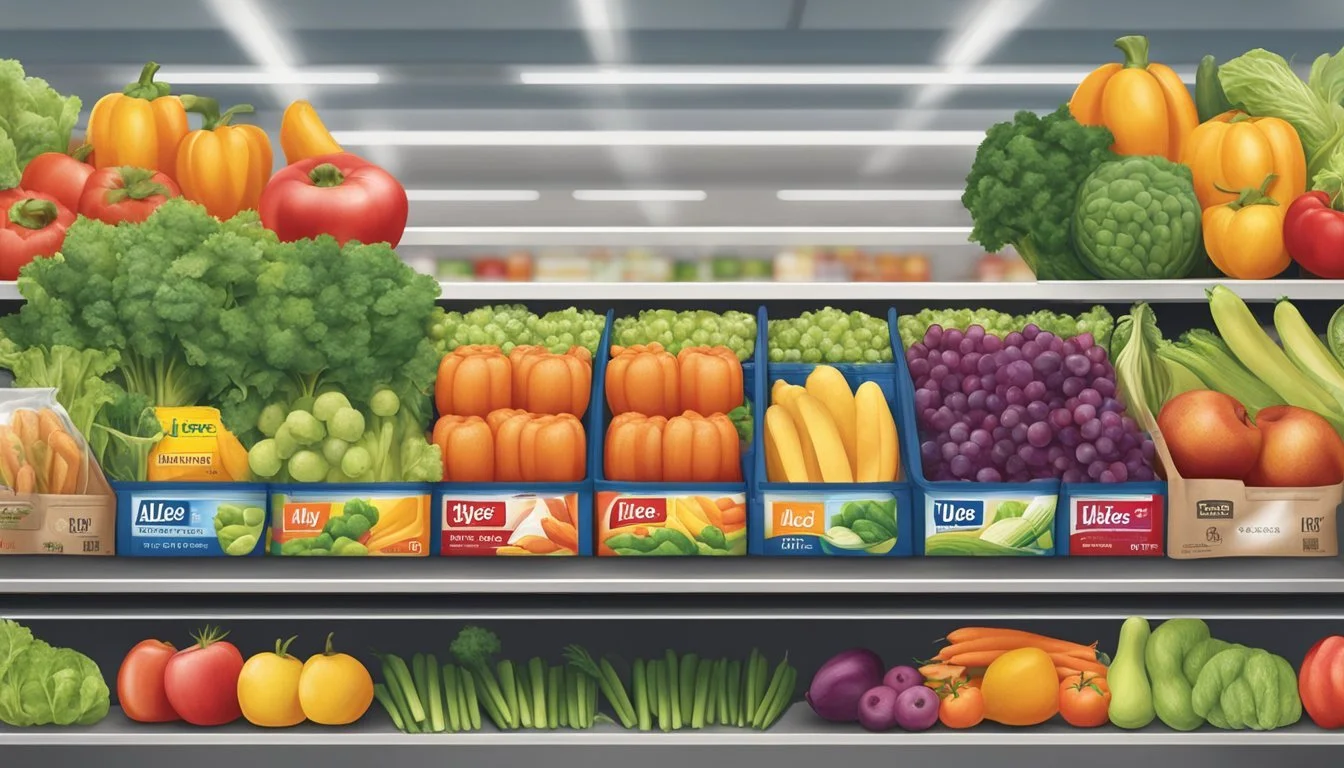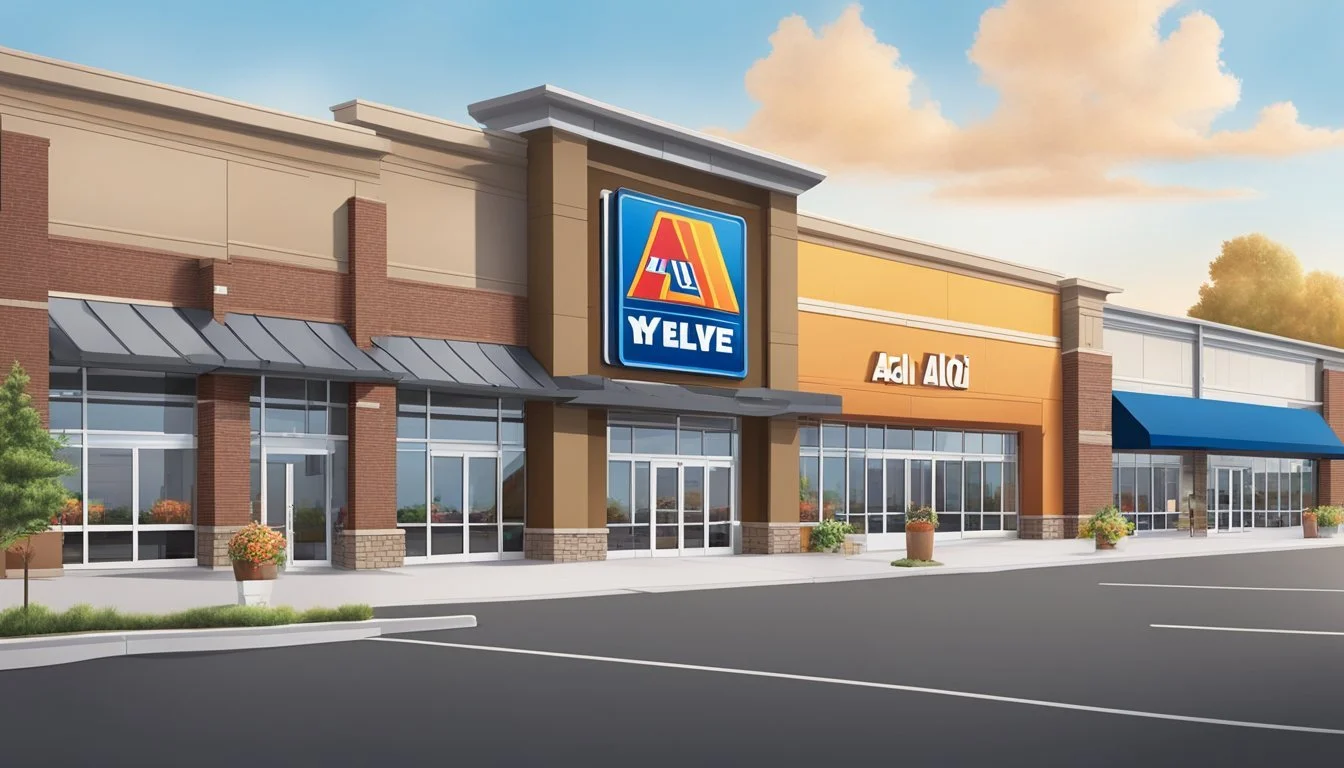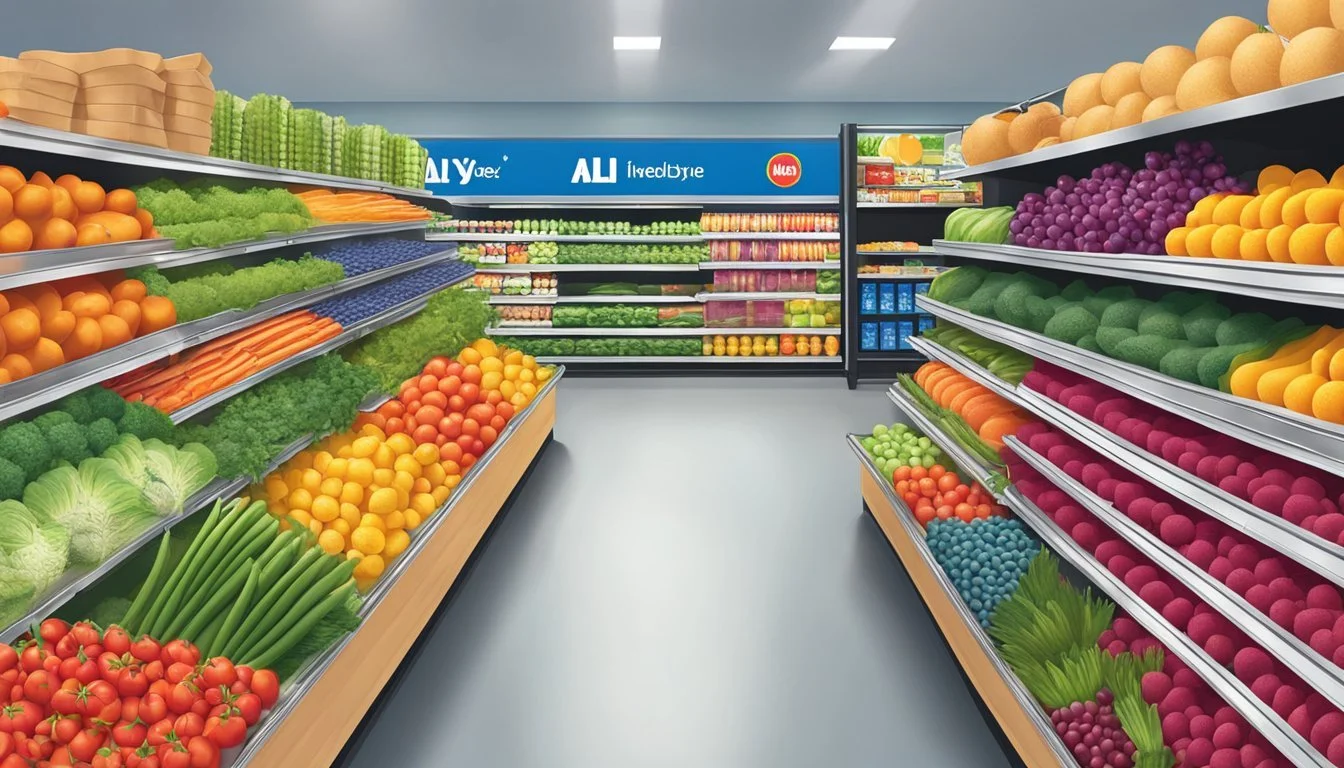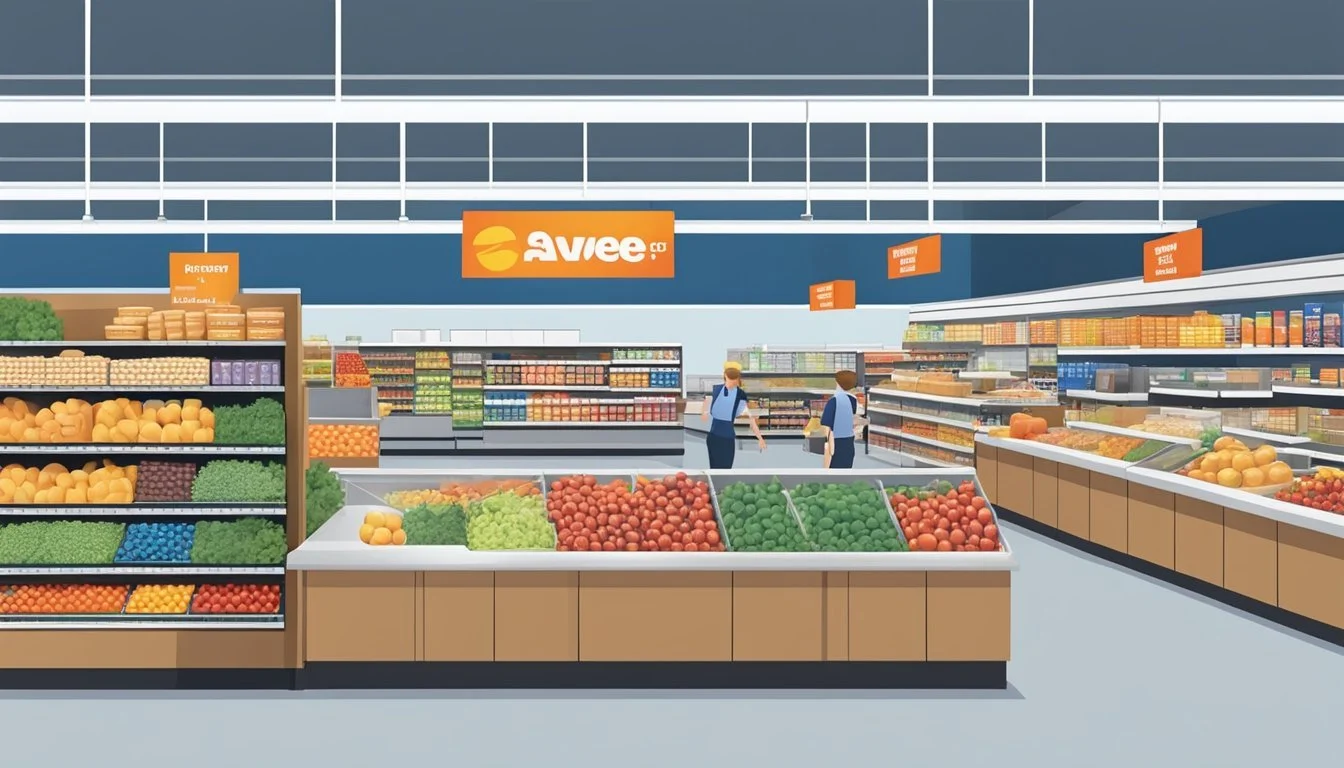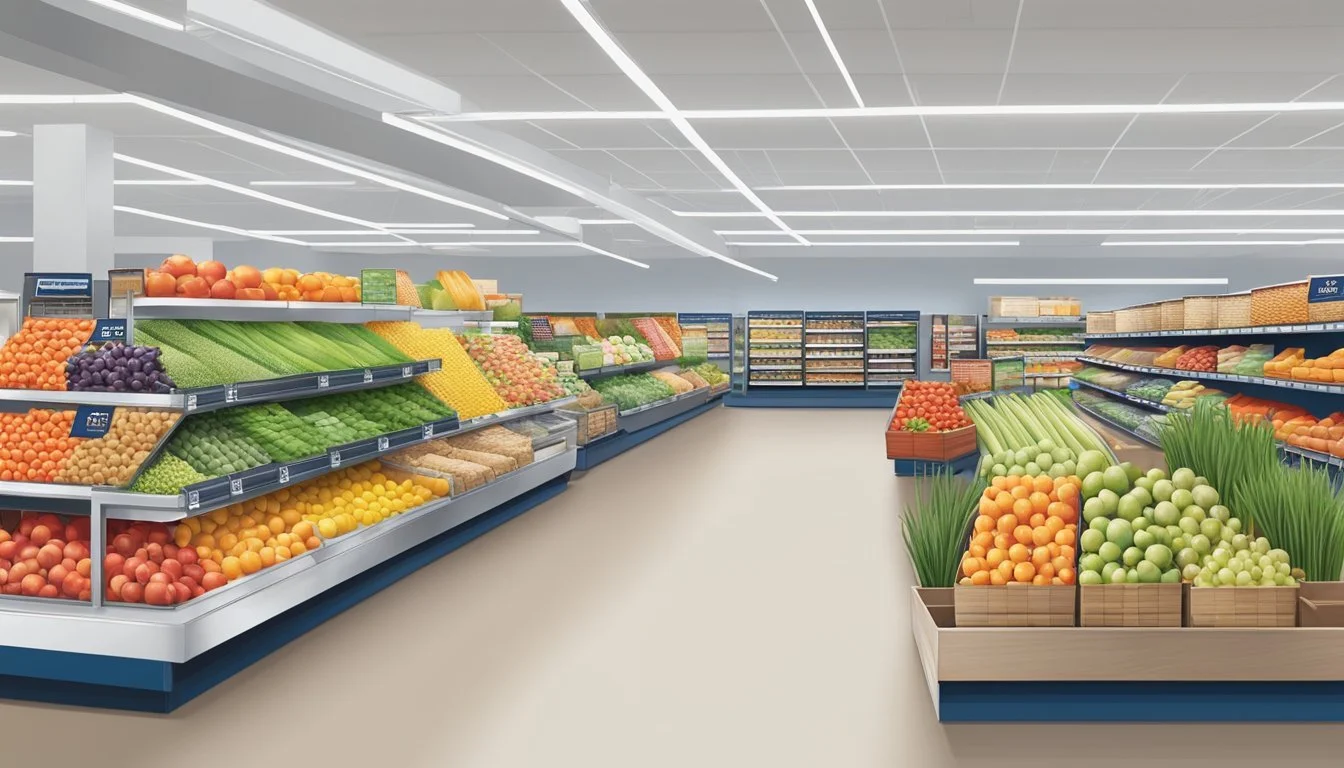Aldi vs Hy-Vee
Comparing Quality, Prices, and Shopping Experience
When it comes to grocery shopping, consumers are often confronted with a plethora of choices, leaving many to ponder which store will give them the best value for their money. Two prominent contenders in this arena are Aldi and Hy-Vee, each offering a unique shopping experience. Aldi is renowned for its cost-effective approach, providing a range of products at competitive prices. The store's efficient layout, coupled with a private label selection, appeals to budget-conscious shoppers.
Hy-Vee, on the other hand, is perceived as offering a more traditional supermarket experience, complete with a wider variety of brands and a focus on customer service. While their prices might be higher on certain items, Hy-Vee argues for better value, taking into account product quality and the shopping experience. Confronted with the choice, consumers must weigh the importance of price against the quality and variety of offerings.
Both stores have their own loyal customer bases and have received accolades for their private label products and store brand selections. With such distinct approaches to grocery retail, the decision between Aldi and Hy-Vee often comes down to individual preferences on cost, convenience, quality, and the overall shopping experience.
History and Background
When comparing Aldi and Hy-Vee, understanding their histories is crucial as it provides insight into their foundational values and evolution over time.
Aldi's Beginnings
Aldi began as a small food store in the suburbs of Essen, Germany, in 1946. It was founded by brothers Karl and Theo Albrecht. The name Aldi is a syllabic abbreviation for Albrecht Diskont. After splitting the company into Aldi Nord and Aldi Süd in 1960, Aldi Süd expanded internationally. Aldi stores are now prevalent across the globe, emphasizing a no-frills shopping experience focused on cost-saving and efficiency.
Hy-Vee's Origins
Hy-Vee has its roots in a small general store in Beaconsfield, Iowa, established in 1930. Its founders, Charles Hyde and David Vredenburg, adopted an employee-owned model that deviates from the traditional corporate structure. The name "Hy-Vee" is a contraction of its founders' last names. This Midwest-based company has grown significantly since its inception, emphasizing customer service, a wide selection of products, and community involvement. Hy-Vee was added to the National Register of Historic Places in 2007, solidifying its cultural and historical importance.
Store Brand and Product Range
In comparing Aldi and Hy-Vee, distinct differences in store brand offerings and product range are evident. Aldi boasts a cost-effective store brand, while Hy-Vee offers a diverse product range, catering to a variety of shopper needs.
Aldi's Store Brand
Aldi is reputed for its store brand, which often matches the taste and quality of national brands at a reduced cost. They typically offer products that are up to 20% cheaper, with essential items like white sandwich bread and raw chicken being noted for their value. Aldi's meat selection is priced competitively, providing shoppers with a more economical choice for their grocery needs.
Hy-Vee's Product Variety
Hy-Vee, on the other hand, shines with its extensive product range, including a wide array of meats and produce as well as healthy food options. While their meat section may be marginally more expensive, shoppers often find a larger variety, which could make it a better value for those who prioritize selection and quality over price. The product variety extends across the store, accommodating customers looking for both specialty items and everyday groceries.
Price and Affordability
When assessing Aldi and Hy-Vee in regards to price and affordability, it is imperative to consider their distinct pricing structures and compare their costs with those of other retailers.
Pricing Structure
Aldi is renowned for its cost-saving approach, primarily featuring store brands over national brands, which contributes to lower shelf prices. Aldi’s model is designed to create a high-volume sales environment, allowing them to offer products at a more economical price point. On the other hand, Hy-Vee operates with a broader selection of brands, including national brands, and often runs sale prices and promotions that may affect overall savings.
Cost Comparison with Other Retailers
Comparisons of Aldi and Hy-Vee with other retailers such as Walmart, Target, and Whole Foods show varying results:
Walmart is known for having prices that are approximately 20% lower than the average for all surveyed stores.
Target has similar price advantages, averaging about 11% lower than competitors.
Whole Foods, often perceived as a higher-cost store, does not compete directly with Aldi and Hy-Vee in low pricing categories.
Furthermore, compared to other groceries like Costco, Publix, Wegmans, Lidl, and Meijer, Aldi tends to maintain a price advantage. This is largely due to its efficient store layouts and limited staff requirements, keeping overhead costs down. Aldi's streamlined operations often result in a price difference that allows shoppers to save.
However, at Hy-Vee, shoppers might find that price comparison involving specific brands at times reveals that it can offer more competitive price discounts, notably when factoring in customer loyalty programs and periodic sales on national brands, unlike Aldi’s consistent low pricing strategy. These factors can influence the cost effectiveness for the shopper looking for such deals.
It is noteworthy that although some customers might save by shopping at Winn-Dixie, Trader Joe's, Kroger, Safeway, or Amazon, Aldi’s pricing model is unique in its consistent delivery of everyday low prices, particularly for its store brands.
Quality and Freshness
When comparing Aldi and Hy-Vee regarding quality and freshness, both have marked strengths in providing fresh food with Hy-Vee taking a slight edge in meat and produce quality, while Aldi often brings better value with its low-cost yet high-quality offerings.
Meat and Produce Quality
Hy-Vee is renowned for its high-quality meats and produce. The store prides itself on sourcing a variety of fresh, often locally-grown fruits and vegetables that cater to health-conscious consumers. Its meat selection includes a range of options from premium cuts to organic and grass-fed varieties, placing a strong emphasis on quality and freshness.
Aldi, known for its cost-efficiency, also ensures a certain standard in the quality of its meats and produce. While its range may not be as extensive as Hy-Vee's, Aldi's produce is often praised for its freshness. Its meat options, although limited, adhere to a reliable standard of quality.
Bakery and Deli Offerings
Hy-Vee's bakery section offers an impressive array of fresh baked goods, including artisanal bread, pastries, and custom cakes, appealing to those looking for both variety and freshness. In its deli, Hy-Vee provides a rich selection of gourmet cheeses, sliced meats, and ready-to-eat meals, often surpassing the expectations for a grocery store deli.
Aldi's bakery and deli sections may not boast the same variety, but the focus lies on delivering quality essentials at a competitive price. Their bakery goods, although fewer in selection, are freshly prepared and satisfy the need for basic, wholesome baked goods. The deli focuses on offering a curated selection of popular items, ensuring each product meets their quality standards.
Shopping Experience
When choosing between Aldi and Hy-Vee, consumers often consider the shopping experience, which encapsulates store layout and design, customer service, and checkout efficiency.
Store Layout and Design
Aldi's store layout is typically streamlined and straightforward, often utilizing a smaller footprint than traditional supermarkets like Hy-Vee. Aldi focuses on efficiency, with aisles arranged to minimize unnecessary browsing and speed up the shopping process. The store design is utilitarian with a focus on the products rather than elaborate displays. In contrast, Hy-Vee tends to have a more traditional supermarket layout, with wider aisles and a larger variety of goods, including specialty sections and a more extensive selection of store brands and amenities.
Customer Service
Customer service at Hy-Vee is often highlighted as a strong point; the staff is known for being helpful and friendly. The company invests in training its employees to provide a high level of service. On the other hand, Aldi’s model includes fewer staff members to keep costs down, which may impact the level of personal service consumers receive. However, staff at Aldi are generally efficient in their roles, aiming to assist shoppers in a timely manner.
Checkout Efficiency
Checkout efficiency is a notable difference between the two stores. Aldi has a unique approach, with customers encouraged to pack their own bags at a designated counter after checkout, contributing to faster service at the registers. This allows Aldi to process transactions more rapidly, though it places more onus on the consumer for packing. Hy-Vee offers more traditional checkout lines, often staffed with baggers to assist customers. This may slow down the process slightly but can enhance the customer's shopping experience by providing additional service.
Special Deals and Savings Opportunities
When it comes to stretching a grocery budget, Aldi and Hy-Vee offer various strategies for shoppers to save. They provide a range of special deals and savings opportunities that can significantly impact the total at checkout.
Weekly Ads and Discounts
Aldi is renowned for its no-frills shopping experience, which translates to lower prices overall. They excel in providing loss leaders which are deeply discounted items designed to draw customers into the store. Aldi's weekly ads feature an assortment of products from various categories that compel savings-savvy shoppers. On special occasions, such as Valentine’s Day, Aldi has been known to offer themed products at competitive prices, adding value for its customers.
Hy-Vee, on the other hand, presents frequent promotions detailed in their weekly ads which cover a broad spectrum of goods from pantry staples to fresh produce. Hy-Vee tends to carry more brand-name products, with sales that often complement seasonal events or holidays. This can present exceptional value to customers, especially when they plan their shopping around these deals.
Loyalty Programs and Benefits
Hy-Vee’s loyalty program stands out by offering a range of benefits that go beyond simple discounts. Members can accumulate points that translate into savings on gas and groceries, or even meal deals. The Hy-Vee Fuel Saver + Perks® card is particularly appealing to regular customers as it offers exclusive deals and discounts that enhance the shopping experience.
In contrast, Aldi does not have a traditional loyalty program, but it maintains its reputation for amazing values on everyday items without the need for points or rewards systems. They focus on keeping prices consistently low rather than offering a points-based loyalty program.
Both stores do not directly offer Amazon Prime discounts or operate like warehouse clubs, instead carving out their own niches in the savings landscape with their distinctive approach to deals and discounts.
Health and Dietary Options
A critical aspect when comparing Aldi and Hy-Vee is the range of health-conscious products they offer, specifically focusing on dietary needs such as organic, gluten-free, vegetarian, and vegan options.
Organic and Gluten-Free Products
Aldi is noted for its SimplyNature brand, which includes a selection of organic products ranging from spices to extra virgin olive oil. They also provide gluten-free options under their liveGfree label, catering to customers with gluten sensitivities or celiac disease. Their inventory includes items like bread, pasta, and snacks that are certified gluten-free.
On the other hand, Hy-Vee prides itself on a diverse selection of organic produce, aligning with health and wellness trends. They have a tendency to stock a variety of gluten-free products across various brands, making it a reliable option for shoppers requiring strict adherence to a gluten-free diet.
Vegetarian and Vegan Offerings
Hy-Vee offers an array of vegetarian and vegan products, reflecting their understanding of the growing demand for plant-based options. They include a variety of fresh produce, dairy substitutes, and meatless alternatives that cater to customers following a vegetarian or vegan lifestyle.
Aldi also provides a satisfactory assortment of vegetarian and vegan products, including their Earth Grown range. This line features various meat-free products such as veggie burgers and vegan cheese, designed for those looking to maintain a plant-based diet while seeking convenience and affordability.
Convenience and Accessibility
When comparing Aldi and Hy-Vee, it's essential to look at their store locations and the options they provide for online shopping and grocery delivery, which can significantly impact a shopper's experience.
Store Locations and Availability
Aldi has a strong presence with nearly 2,000 stores across the United States, making it accessible to a large number of consumers. They are known for their smaller, more efficient store layouts, which can often lead to a quicker shopping trip. Hy-Vee, on the other hand, operates primarily in the Midwest with over 240 stores. While not as widespread as Aldi, Hy-Vee's larger stores offer a wider range of products, including a variety of national and store brands.
Aldi: Compact size, widespread footprint.
Hy-Vee: Larger stores, regional focus in the Midwest.
Online Shopping and Grocery Delivery Options
Both Aldi and Hy-Vee have adapted to the growing trend of online shopping and grocery delivery. Aldi offers delivery through partnerships with third-party services like Instacart, reaching a vast array of customers who prefer shopping from home. Hy-Vee provides its own dedicated grocery delivery service, emphasizing their commitment to convenience for their shoppers.
Aldi's Delivery Partners:
Instacart
Hy-Vee's Delivery Options:
Hy-Vee Aisles Online
Aldi and Hy-Vee strive to meet customer needs with different strategies around convenience and accessibility, both in-store and online.
Community Involvement and Sustainability
When comparing Aldi and Hy-Vee, it is important to consider their impact on local communities and the environment. Both stores have made commitments to sustainability and community support, signaling their awareness of corporate responsibility.
Local Community Support
Aldi maintains a strong presence in community involvement through various initiatives. They offer support to local families by keeping prices low and providing healthy options. Hy-Vee distinguishes itself by actively participating in community events and contributing to local organizations, thereby having a hands-on approach to community support.
Aldi: Focus on affordable prices for families
Hy-Vee: Involvement in local community activities and partnerships
Environmental Initiatives
In terms of environmental sustainability, both Aldi and Hy-Vee have taken significant steps. Aldi's corporate responsibility includes a commitment to reduce waste and energy use, alongside sourcing sustainable products. Hy-Vee has been recognized for its sustainability efforts, especially in sourcing seafood responsibly and adopting environmentally-friendly practices throughout its operations.
Aldi:
Reduction of waste and energy consumption
Sustainable product sourcing
Hy-Vee:
Recognized by Greenpeace for sustainable seafood practices
Participation in environmental consortia and adoption of a seafood code of conduct
Final Thoughts on Aldi and Hy-Vee
When considering Aldi and Hy-Vee as options for a favorite grocery store, consumers are presented with distinct choices. Aldi is known for its discount pricing model, often offering significant savings on a range of products. A comparison of meat prices suggests Aldi generally provides meats at a lower cost than Hy-Vee. However, in a direct comparison, it was noted that the meat purchased at Aldi was a little less in weight, potentially making Hy-Vee the better value in certain circumstances.
Hy-Vee appeals to shoppers with its wider variety of store brand options and is recognized for overall quality. While Hy-Vee's prices may be higher than Aldi's on average, it offers weekly sales through ads that can result in significant savings, and the opportunity to shop for a broader range, including specialty items.
In terms of produce, both stores have their merits, with Aldi's model geared towards affordability and Hy-Vee focusing on variety and quality. The choice between the two may come down to a personal preference for either savings or selection.
Recent surveys and consumer ratings have shed light on the different strengths of each store. While Aldi may lead on pricing compared to the all-store average, Hy-Vee often receives praise for its customer service and in-store experience.
Ultimately, the decision for consumers may hinge on the relative importance they place on cost versus experience and selection. Both Aldi and Hy-Vee have proven to be strong contenders in their own rights within the grocery sector.

